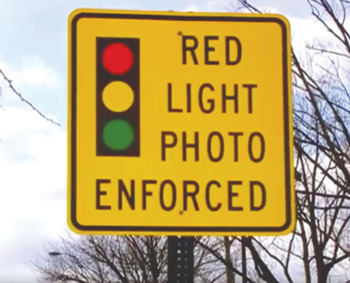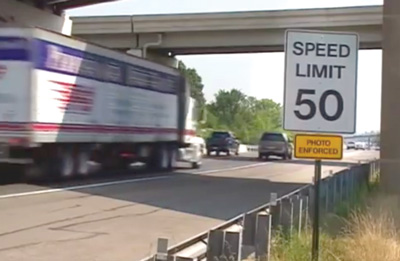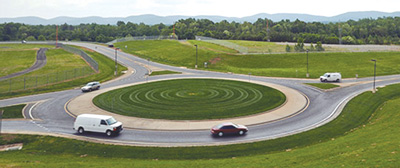

October 2016
Red light running happens frequently and is often deadly. In 2014, 709 people were killed and an estimated 126,000 were injured in crashes that involved red light running.
Red light cameras are an effective way to discourage red light running. Enforcement is the best way to get people to comply with any law, but it's impossible for police to be at every intersection. Cameras can fill the void. An Institute study comparing large cities with red light cameras to those without found the devices reduced the fatal red light running crash rate by 21 percent and the rate of all types of fatal crashes at signalized intersections by 14 percent.
Cameras don't violate privacy. There's no reason to expect privacy on a public road. Driving is a regulated activity, and people who obtain licenses agree to abide by certain rules. Red light cameras are a mechanism to catch people who break those rules, just like traditional enforcement.
Proper signal timing makes intersections safer. Adequate yellow time reduces red light running and leads to fewer crashes.

Automated enforcement
Automated enforcement refers to the use of cameras to enforce traffic safety laws. Although many states have laws explicitly authorizing automated enforcement, not all states where cameras are in use have such laws, nor are they always necessary.
A common type of automated enforcement program is for red light violations. The use of cameras to enforce speed limits is less common, but increasing. The technology is also used to catch drivers who block intersections or fail to stop at a stop sign, pay a toll, drive past a stopped school bus or disobey a railroad crossing signal.
The District of Columbia uses automated enforcement to ticket drivers who fail to yield to pedestrians. In states that have automated enforcement laws, some authorize enforcement statewide, while others permit use only in specisfied communities.
Many jurisdictions treat automated enforcement citations just like parking tickets in that the registered owner is liable. Similarly, just as parking tickets do not result in points or are not recorded on a driver's record, many jurisdictions do not assess points or make a record of automated enforcement citations.
430 communities have red light camera programs as of October 2016.
143 communities have speed camera programs as of October 2016.
This includes statewide work zone programs in Illinois, Maryland and Oregon.
The following map and table summarize automated enforcement laws in each state and the District of Columbia.
States where red light and/or speed cameras are used

Roadway and environment

Where you drive affects the risks you face.
Most crash deaths occur in rural areas. Although less than one-fifth of the population live in rural areas, more than half of crash deaths occur there. Head-on crashes and single vehicle run-off-road crashes are common in rural areas.
Pedestrian and bicyclist deaths are more common in urban areas, as are crashes that cause nonfatal injuries to vehicle occupants and property damage. More traffic means more crashes, but better enforcement of speed limits and red lights can help minimize them. Simple traffic engineering changes such as adding left turn lanes can also help.
Fixed objects and animals present hazards. About 20 percent of motor vehicle crash deaths occur when a vehicle leaves the road and strikes a fixed object such as a tree, utility pole or traffic barrier. Collisions with animals are a frequent cause of insurance claims for vehicle damage, particularly in the fall in states with large deer populations.
Roundabouts
When roads go in circles at intersections, the risk of serious crashes drops. See our roundabouts section for more on this increasingly popular traffic engineering tool.

Stop ahead markings
Pavement markings that alert approaching drivers to stop signs reduce crashes and are inexpensive to install.
